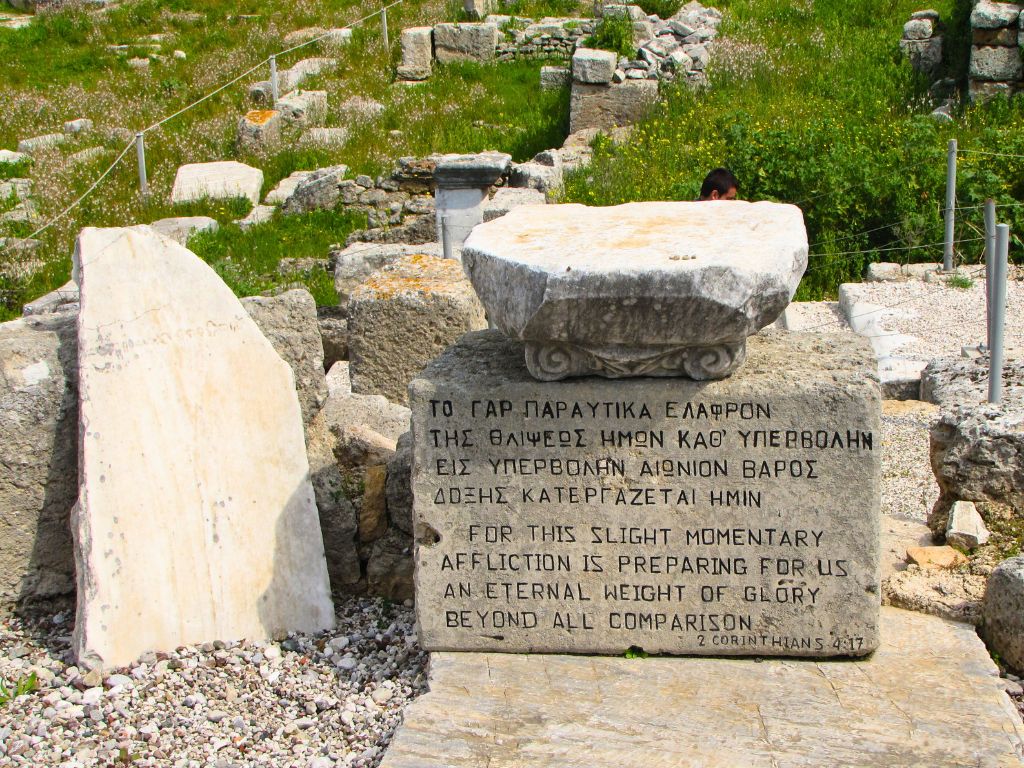The Apostle Paul uses his experience in the city of Corinth, Greece to clarify his message. For example, Paul used a visible, touchable illustration of daily life in Corinth when he wrote Romans 12:1.

At the time of the Apostle Paul, two cults were present in Corinth, the Cults of Aphrodite and Apollo.
- In the worship of Aphrodite, the human body was considered a temple. So, Paul writes, Romans 12:1 “Present your bodies a reasonable, logical sacrifice” (not living sacrifice, which is a poorer translation.)
- In the worship of Apollo, there was the practice of ecstatic worship. We talk about ecstatic worship when we talk about the temple in the middle of the city.
In Corinth we have already seen the area of the theater, the Erastus Inscription, and just on the side of the parking place are the ruins of the Auditorium. A museum is built at this corner.
And now we stand here, in front of the ruins of the Temple of the Imperial Worship.
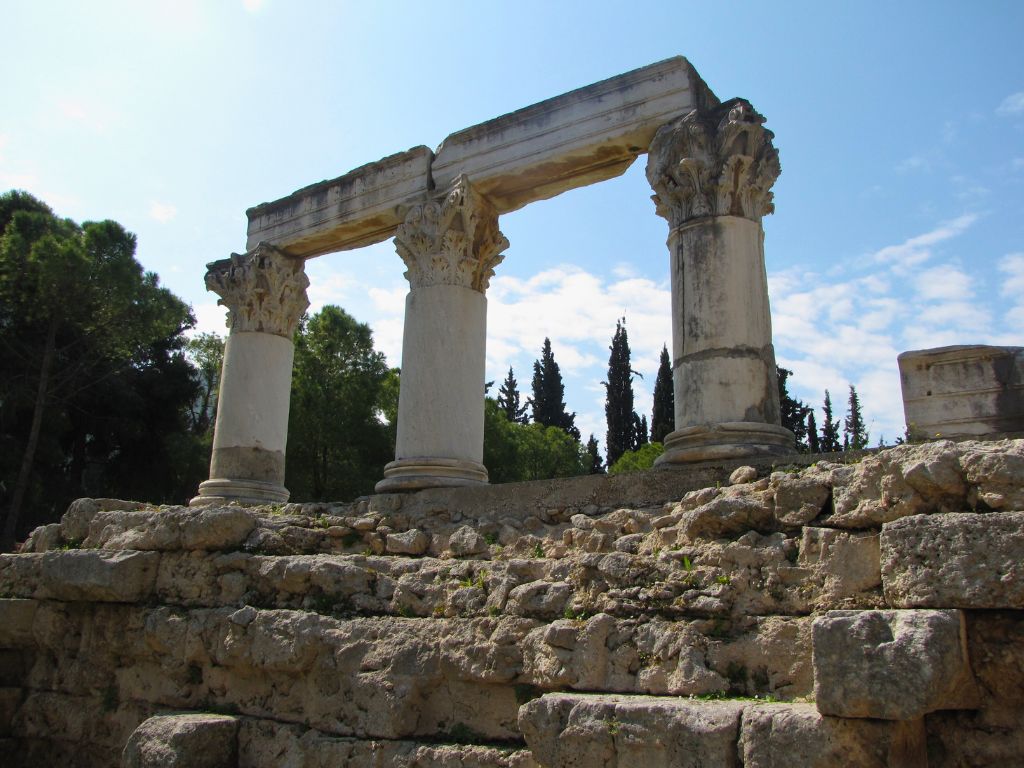
Let us look at the Temple of the Imperial Worship in Corinth. This is one of two major temples in the area of the Agora. These ruins are the foundations of the first temple, where you see Corinthian style. Look at the capitals.
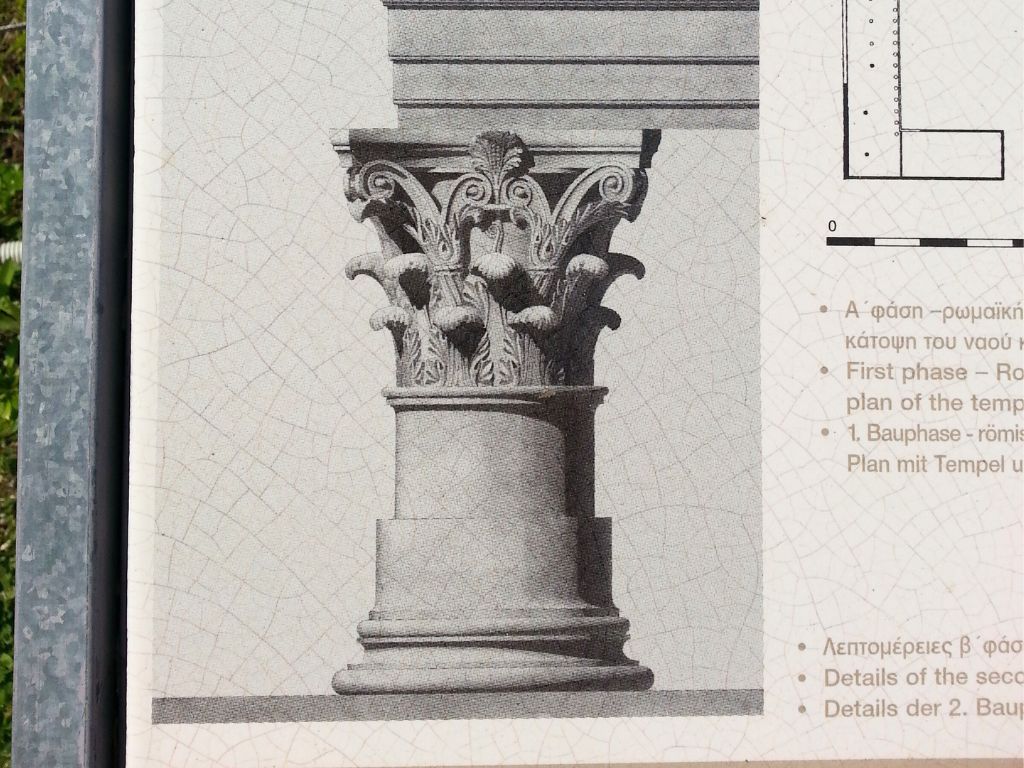

Compare the Corinthian style columns (above) and with the style of the columns in the second temple below. Notice the less decorative elements at the top of the columns.
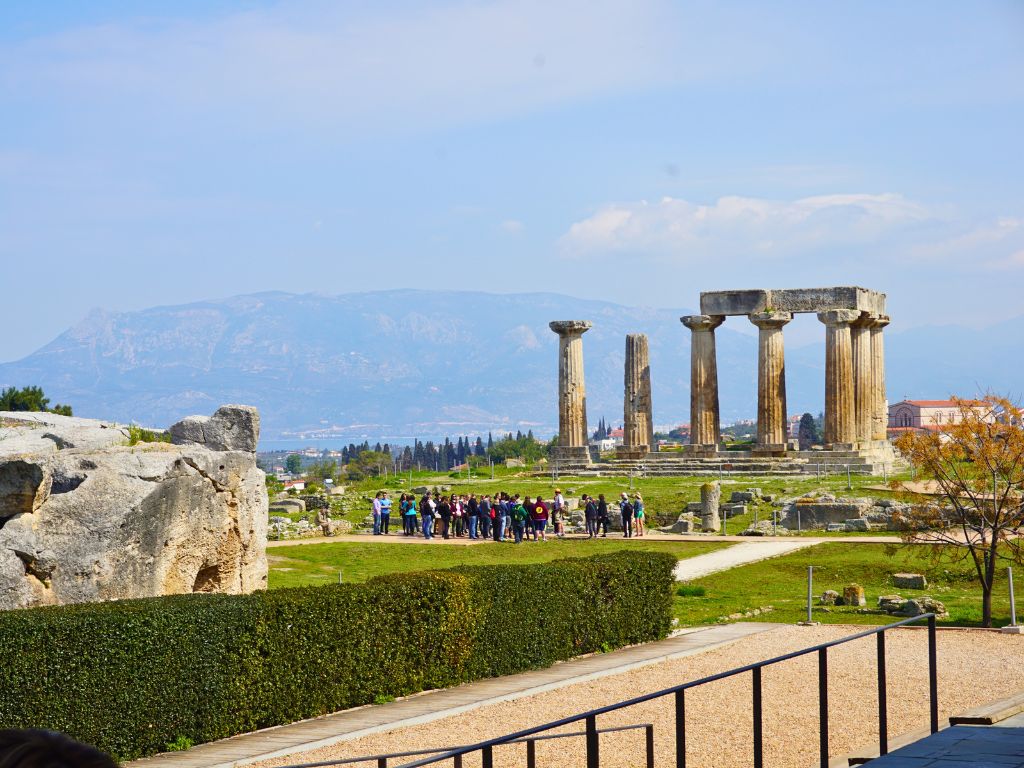
In modern terms, one temple is the Classical Time Cathedral, and the other is the Roman Time Cathedral. (One temple uses Corinthian capitals and the other uses Doric capitals on the tops of the columns.)
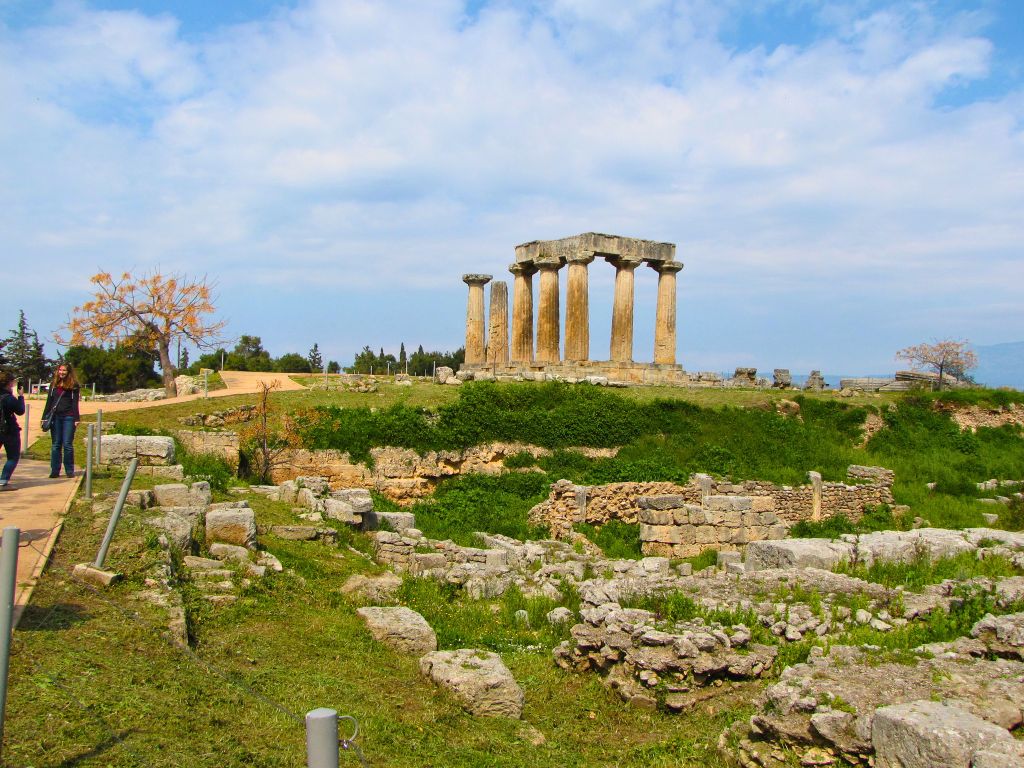

Christians, for 250 years, were under persecution, not because they worshiped Jesus, but because they refused to worship the Emperor. Christians were brought to the Temple of the Imperial Worship to go through a simple test, the test of worship. They were given a bunch of incense, enough incense for them to throw into the flames of the altar and pronounce two words, “Caesar Lord.” There were Christians who refused to go through that simple test. What happened after that refusal? They were accused of high treason, tortured, and in the long term executed to death in public places – like the theater we saw here (and the theater of Philippi.) This is why the Temple of the Imperial Worship (these temples were everywhere, even in little villages like Philippi) was so important at the time of the persecutions against Christians. There is a Christian historian of fourth century AD called Eusebius of Caesarea. He said that during this time of persecution, 6 million people were executed or tortured to death because they refused to go through the simple test saying, “Caesar Lord,” and throwing some incense in the fire of the altar.
At the entrance to the agora is a space between a gate, which was where a staircase used to be. Where there used to be a staircase, today there is this corridor. And we have the religious section on the short side of the agora. The ruins on both sides of the corridor are the foundations of the temples. The Agora of Corinth is the biggest and the most complete agora excavated in the whole Mediterranean world.
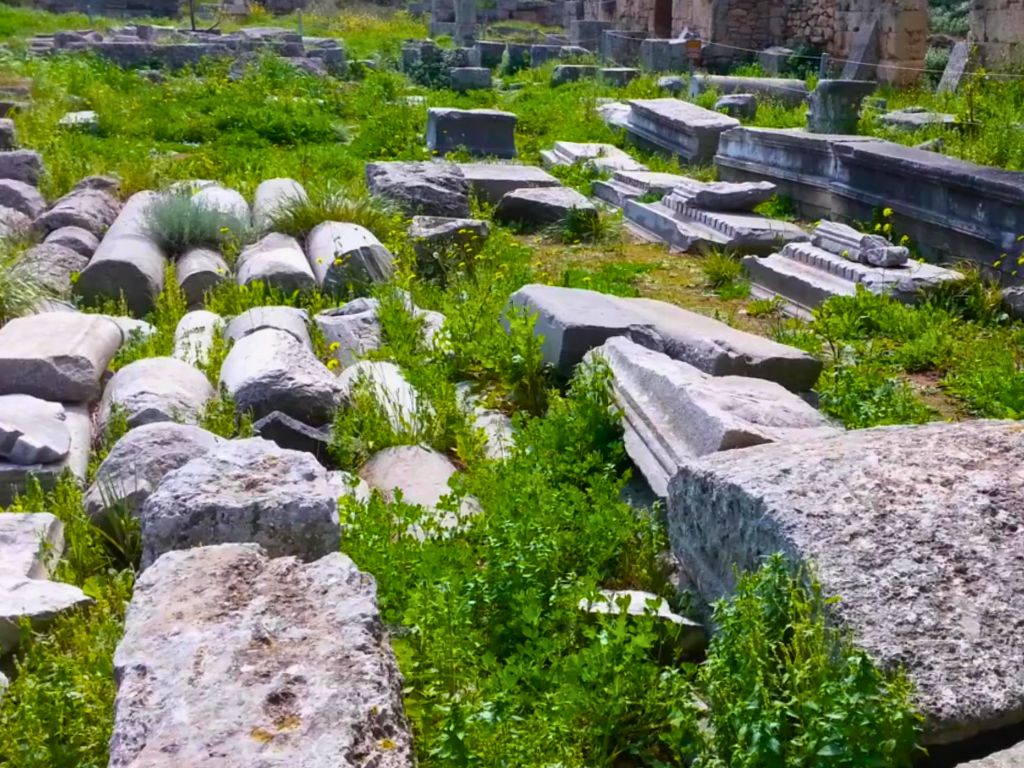
These are the ruins of the Roman Forum, not the ruins of the Ancient Greek Agora. But here we do have all of the necessary elements of an Ancient Greek Agora.

Remember, Octavian Augustus gave the order to rebuild Corinth and the city walls were repaired in the public section, while the classical city, the residential area, was buried. New inhabitants were invited to dwell on the new terrain/surface built on top of the classical city.
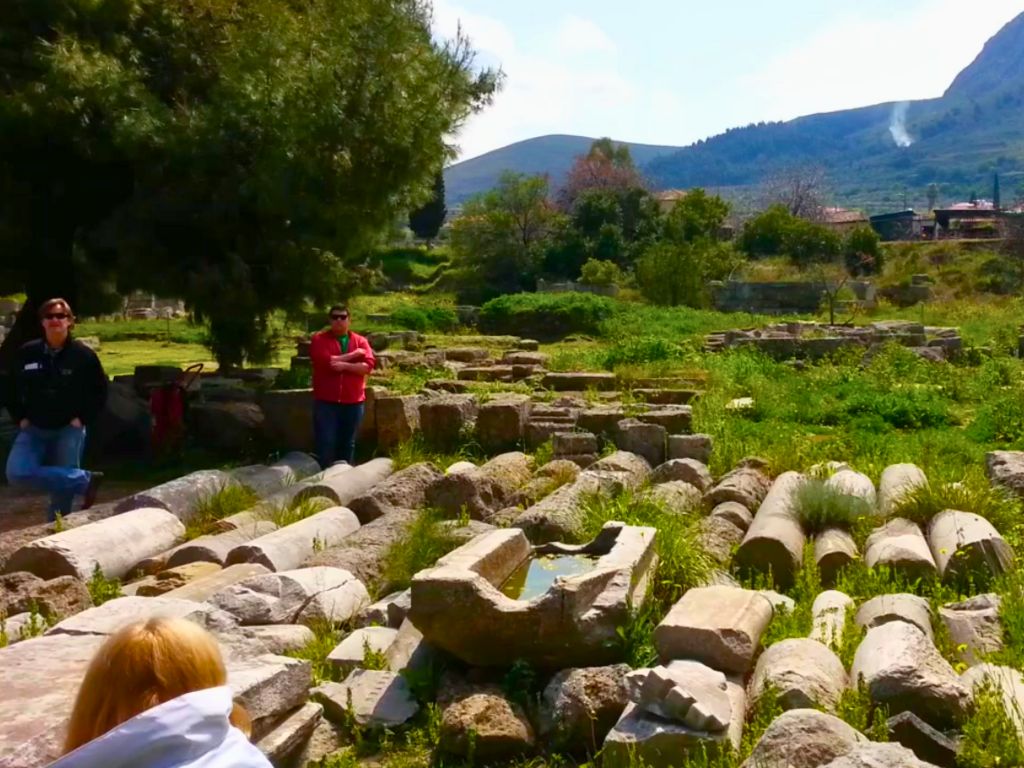

In Corinth, high-status administrative offices were guarded. A fence divided the agora/square, forming a yard in front of the administrative section. The yard was for the guards, for the soldiers, and it was called the Yard of the Praetorian. The Praetorian Yard is mentioned in the New Testament in Mark’s gospel which describes the trial of Jesus. Mark said that only Jesus was brought into the Yard of the Praetorian. Mark 16:15 “The soldiers took Jesus into the Yard of the Praetorium and called out the entire regiment.”
Corinth also had a Court of the City, a court for the judgment of penal crimes.
The long section of the administrative section was for two kinds of administrative seats, municipal and provincial. The administration included
- The extraordinarily strong municipal administration, the Roman Proconsul.
- Corinth was the capital city of a province, and it had a strong provincial administration. Think about the four biggest cities (after Rome) which were Corinth, Alexandria of Egypt, Antioch of Syria, and Ephesus of Asia Minor. There is a rough estimation about the population which we believe was between 300,000 and 700,000 people. There is written information about Corinth by Athenaeus of the late 1st century/early 2nd century who said there was a time when Corinth had 450,000 slaves. It was a large city.
- So, we understand Corinth needed a strong bureaucracy to administrate this population.
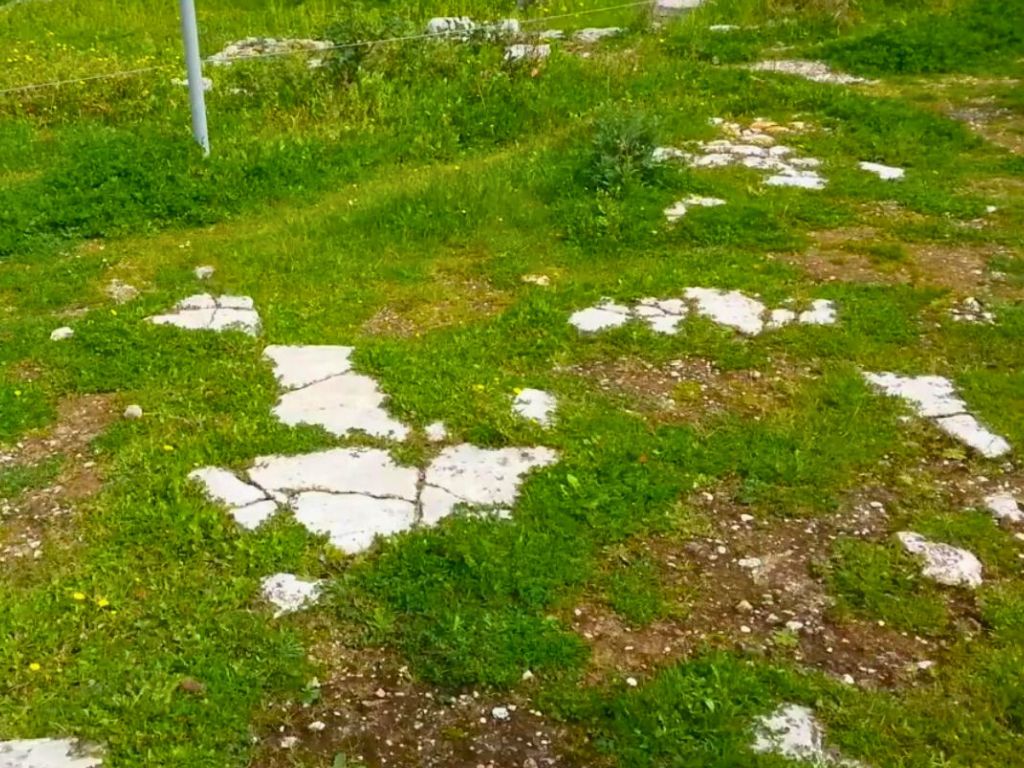
Remember that the agora is not to be called a marketplace for the whole complex. Agoraphobia does not mean the fear of buying or selling things. Correct it in your Bible everywhere you find the phrase marketplace. Acts 15:11 “But when her masters saw that their hope of profit was gone, they seized Paul and Silas and dragged them into the agora (also called the forum, or town square but not the marketplace or mall) before the authorities.” Stepping upon the remains of the marble pavement of the square, all paved with marble and at the end of the excavation you can see the ruins of the corridor. The oldest monument on the site dates back to the sixth century BC. At one corner we have the commercial section.
Archaeologists removed a part of the Roman layer to find out what was here during classical times. This area here, at the time of Apostle Paul, was all buried. They discovered that during classical times, there was an expansion of the complex of the temple. And at this actual area, which is behind the ropes, was an Oracle.
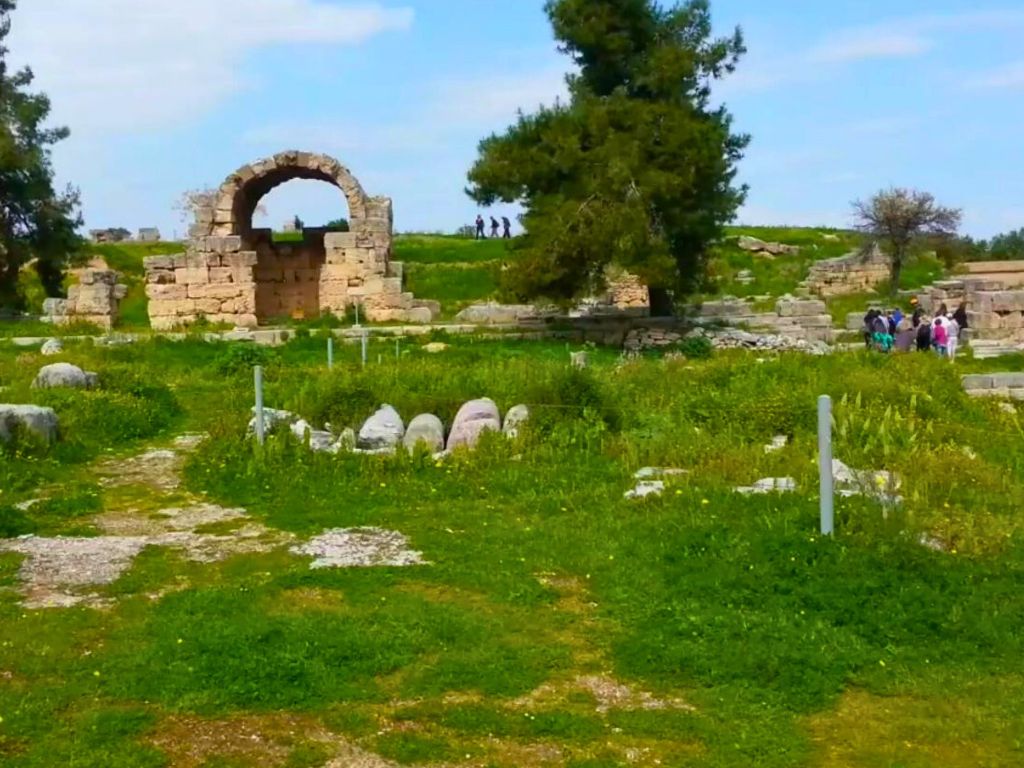
One of the shops has a roof – because during the Christian time it was used as a chapel.


Next, we see the most important spot in the square of the agora, the Bema.
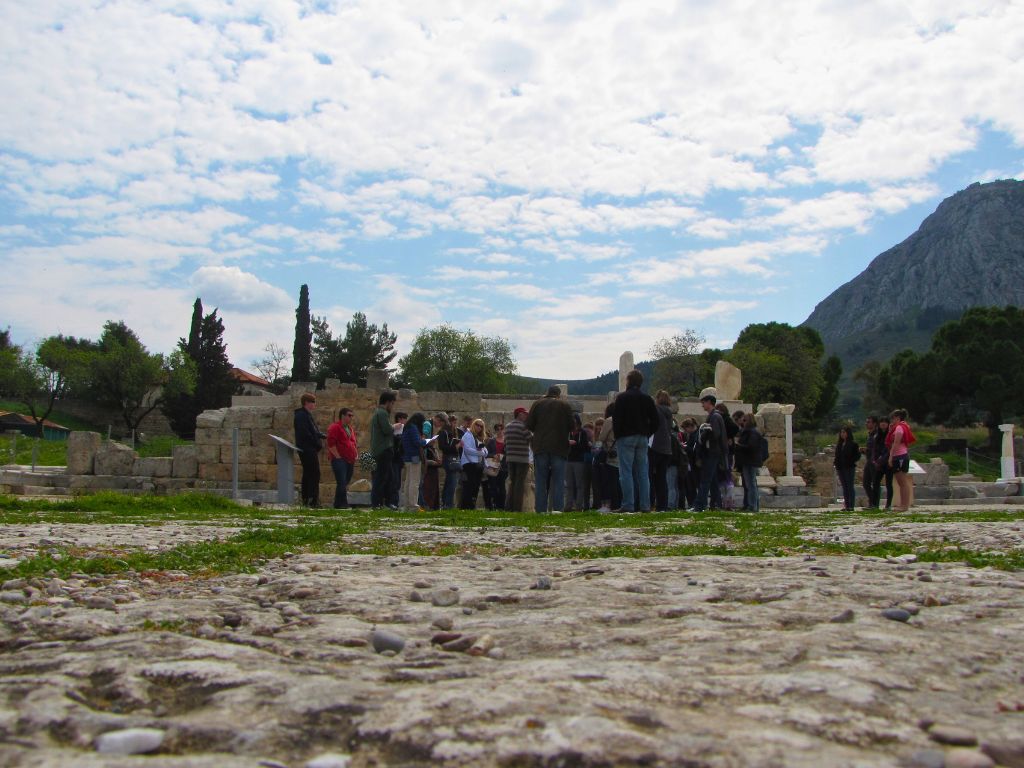
In Corinth, the Bema is a complex, and the Bema here is imperial size. We are in the capital city!
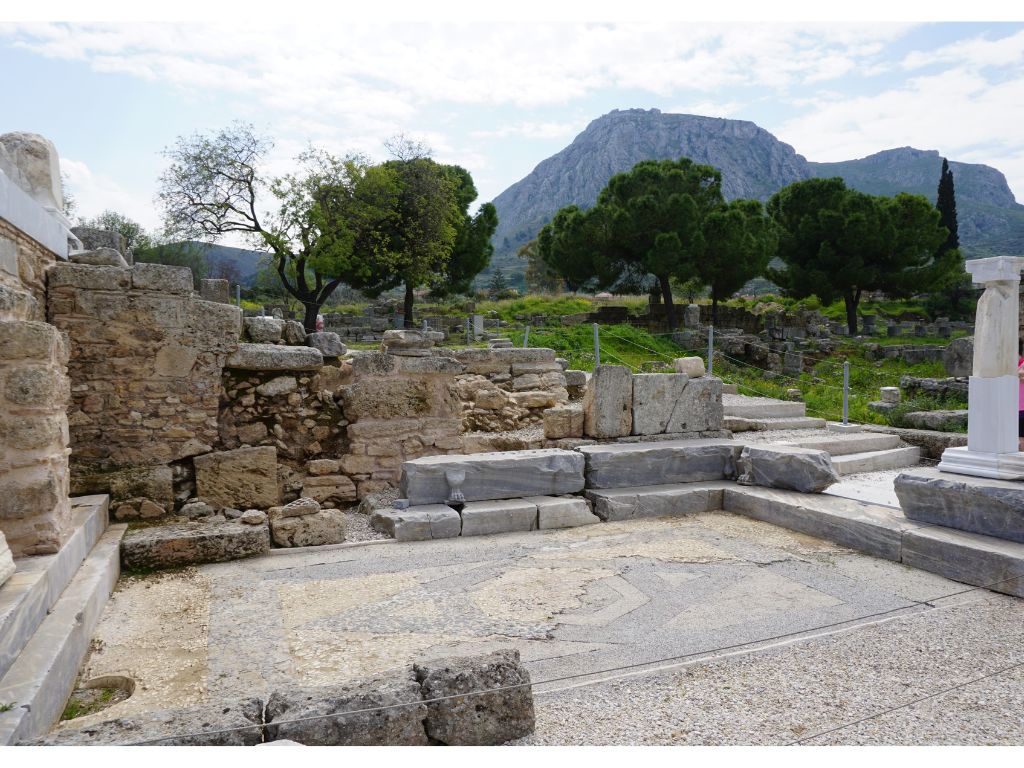
Can you see the end of the marble pavement and the mosaic floor behind it? Look around the mosaic floor at the marble benches with special decoration. The Bema was covered all around with marble decoration, like you see at this corner here. It was not just limestone blocks; It was all dressed in marble decoration. Part of the decorations (not shown) include a lions face, and a dolphin.
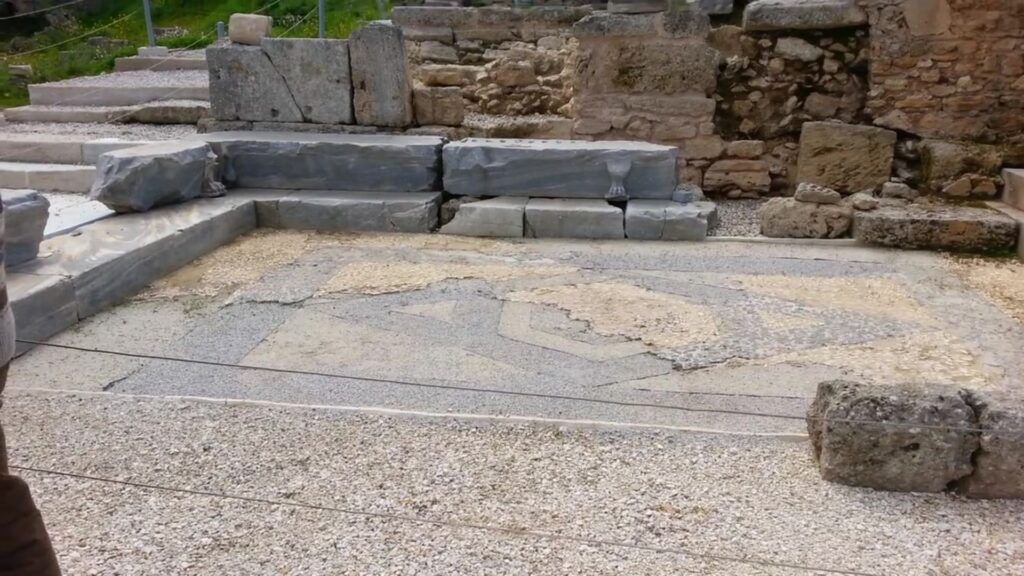


On the other side of the platform, we have a similar, symmetrical place, a place for the second rank of Roman officers. Up further was the place for the Supreme Office of the Roman Proconsul.


The Bema was not a court, nor a judgment seat.
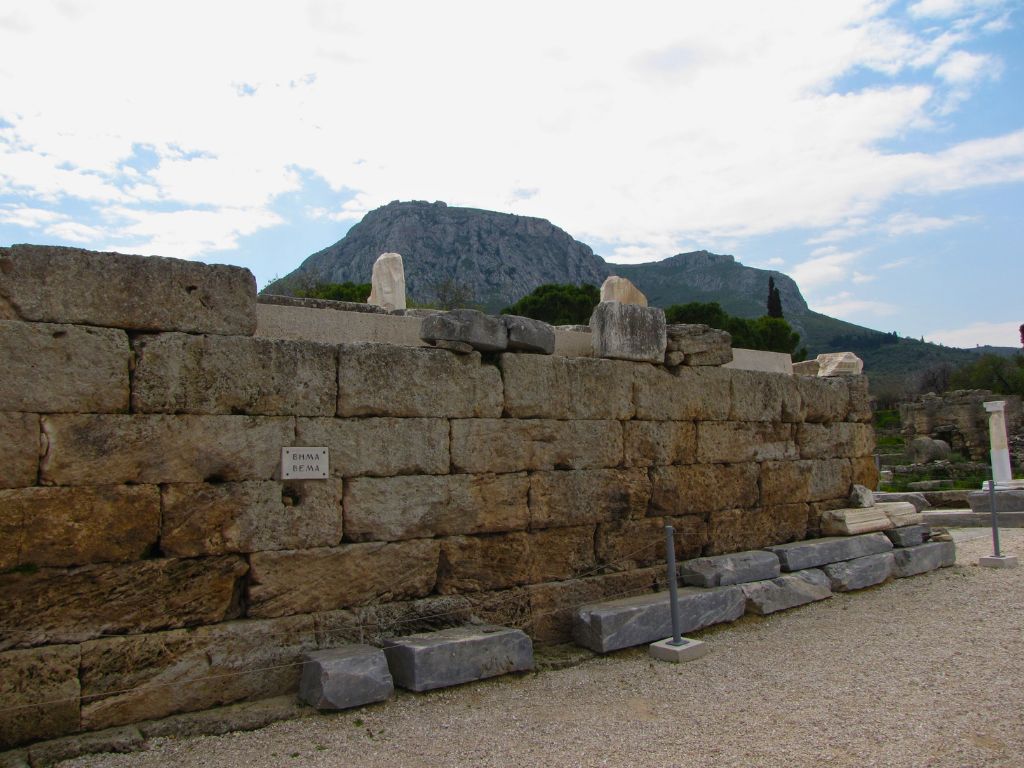
Bema was the grandstand on which Roman authority was manifested, proclaimed and executed. (We can make a comparison with the July 4 grandstand of an American president.)
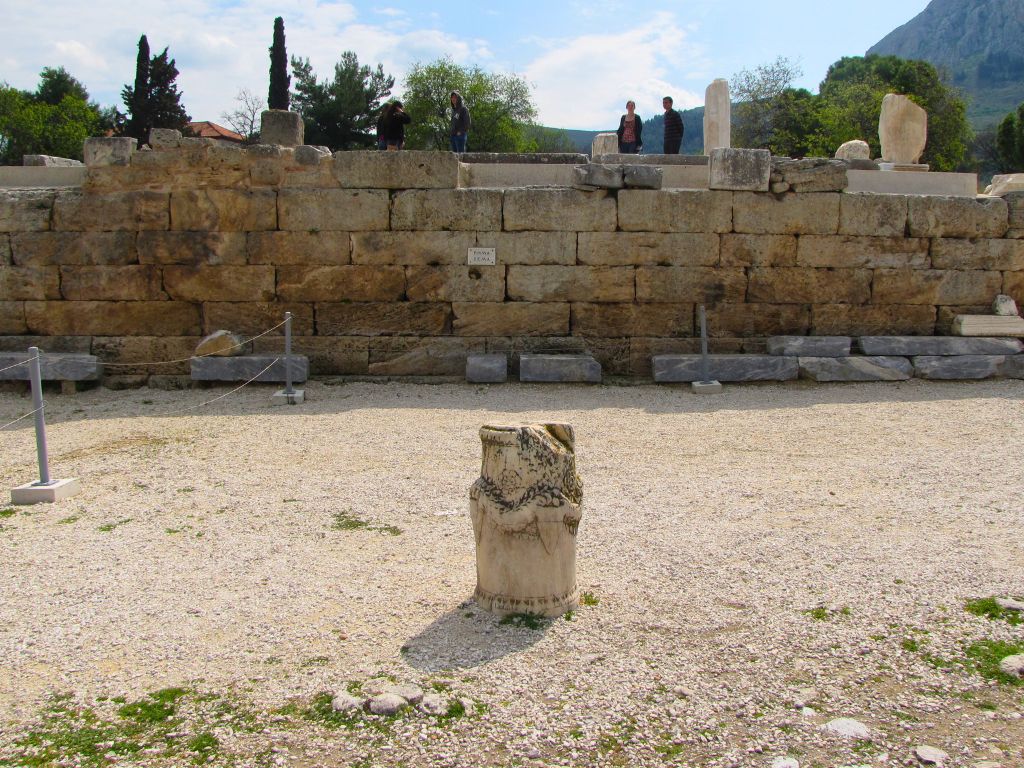
During religious and political events and events of the public life of the city, the Romans were not scattered among the crowds. But from higher up they could attend and participate in these events. And remember also that we said that only some very special people proceeded in front of the Bema, in order to be rewarded or publicly punished.
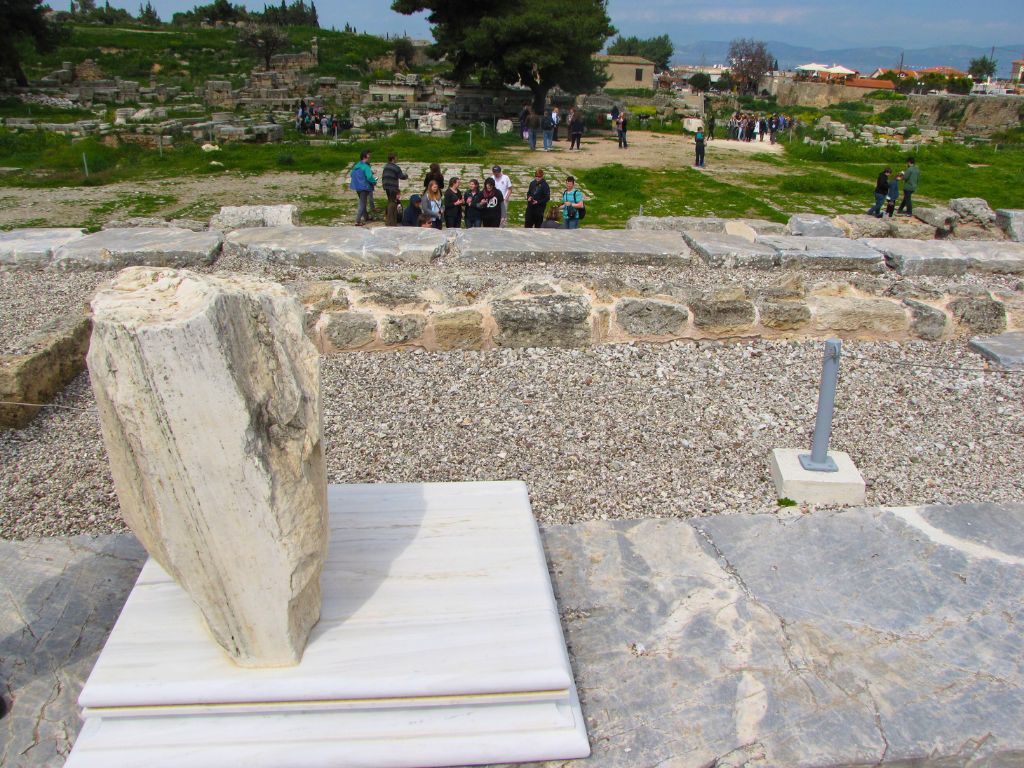
Now look at this column below. We know about this column, the stone of the block of shame, this is the only place where we have the column preserved. On the other John 19:13 “So, when Pilate heard these words, he brought Jesus out.” Paul brought Jesus out because he was in the yard and sat down on the judgment seat. The term in the Bible is bematas which is related to the genitive of this word.
On the side of this column is a hole where there was fixed a ring. So, if somebody was brought here as an offender of the Roman administration for a political, high treason, the things we spoke in Philippi about, this column was the tool of his public punishment. And remember that for penal crime, the punishment was held in a different location. It was not necessary for penal crime punishments to be public.

But the punishment of the political crime for doubt, or conspiracy, was always publicly punished with the recognition of the Roman authorities. So, after the person was found guilty, his garments were taken off. Then he kneeled down and he embraced this column, and his arms were banded here, and his back was exposed to the whip, and he was publicly ashamed. And remember also that the people who were are ordered here were the ones who had willingly knelt in front of the authorities. Do you remember that also?
The term Bema is mentioned several times in the New Testament, and here we are going to see where it is found in the Gospels. It is mentioned in the Gospels by two eyewitnesses, Matthew and John. They describe the trial of Jesus Christ.
- Matthew 27:19 says that Pilate was sitting upon the Bema when his wife sent him a message to be away from this man because he was innocent.
- The second time Bema is mentioned is in John’s Gospel, John 19:13, and is a different description. “So, when Pilate heard these words, he brought Jesus out and sat down on the judgement seat in the place called the stone pavement in Aramaic Gabbatha.”
Remember, there are two necessary components of an ancient Agora. One is the Praetorium and the second is the Bema. Do you think there was an Agora in Jerusalem? Yes, there was an agora in Jerusalem built by Greek and Romans conquerors, and yes, foreign to Jewish tradition. Their conquerors called the agora, Gabbatha, the main pavement of the city. On the main pavement of the city was the Bema.
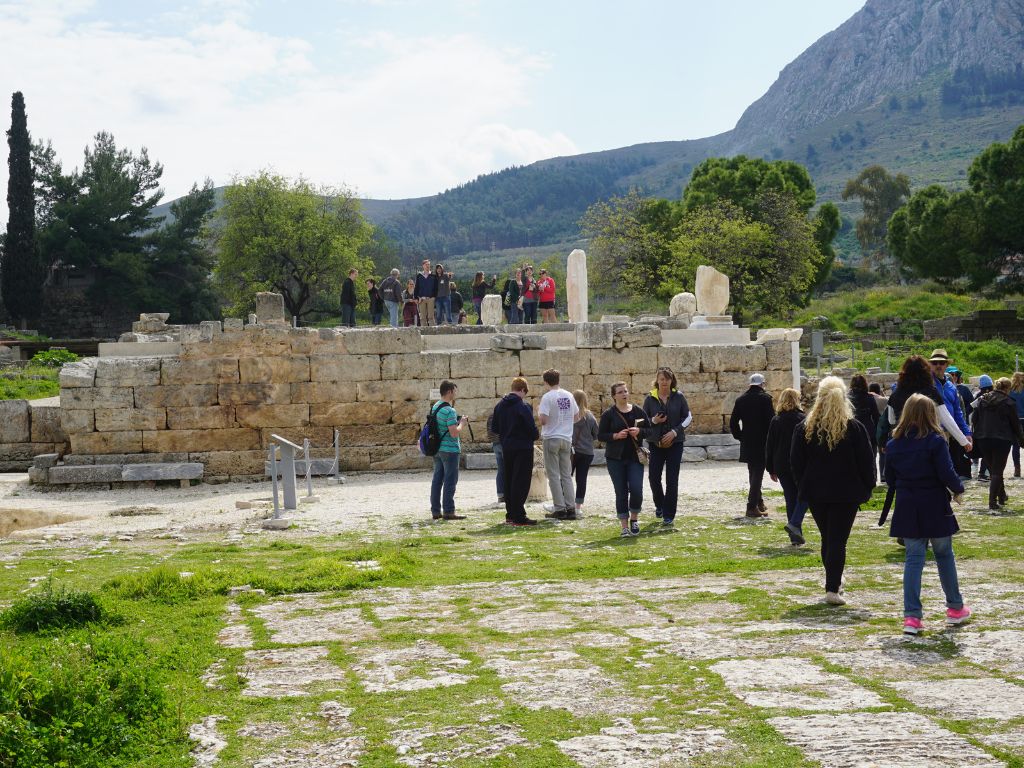
So, when Pilate heard these words, he brought Jesus out. John 19:13 Pilate brought Jesus out because he was in the yard and sat down on the judgment seat. The term in the Bible is bematas which is related to the genitive of this word which is there.
In Jerusalem, Pilate sat in front of a place similar to what is in front of you. The Bema of Jerusalem used to be at a place called the stone pavement, in Aramaic, Gabbatha. Archaeological excavation sheds the light in Jerusalem – just beside Bethesda pool is a pagan temple dedicated to a Greek god at that time, the temple of Asclepius. We know In Jerusalem there was a theater and a gymnasium – but it has not been found yet.
Now, in the book of Acts this term is mentioned related with two cities
- Caesarea Maritima (Caesarea by the Sea) In Acts 12 :21 “On an appointed day, Herod, putting on royal clothing and sitting down on the Bema, began to deliver a public address.” Do you remember how Herod died? Herod was speaking to the people of Tyre and Sidon and the people started clapping for him and screaming, “Your voice is not a human voice, but divine.” And obviously he started thinking, “Am I a human?” That directly offended the Divine, so Herod was struck and eaten alive by worms upon the Bema while he was speaking in front of the crowd.
- In Acts 25:6 the Bema is also mentioned, “On the next day, Festus sat down on the Bema and gave order for Paul to be brought.” When the Apostle Paul was brought in front of the ruler Festus. Acts 25:10, “Paul said, ‘Before the Bema of Caesar…” And so, the Apostle Paul made his request to be proceeded in front of the Bema of Caesar.
If you ever are visiting Rome, especially the Roman Forum, do not miss the Rostra (Latin for Bema.)
